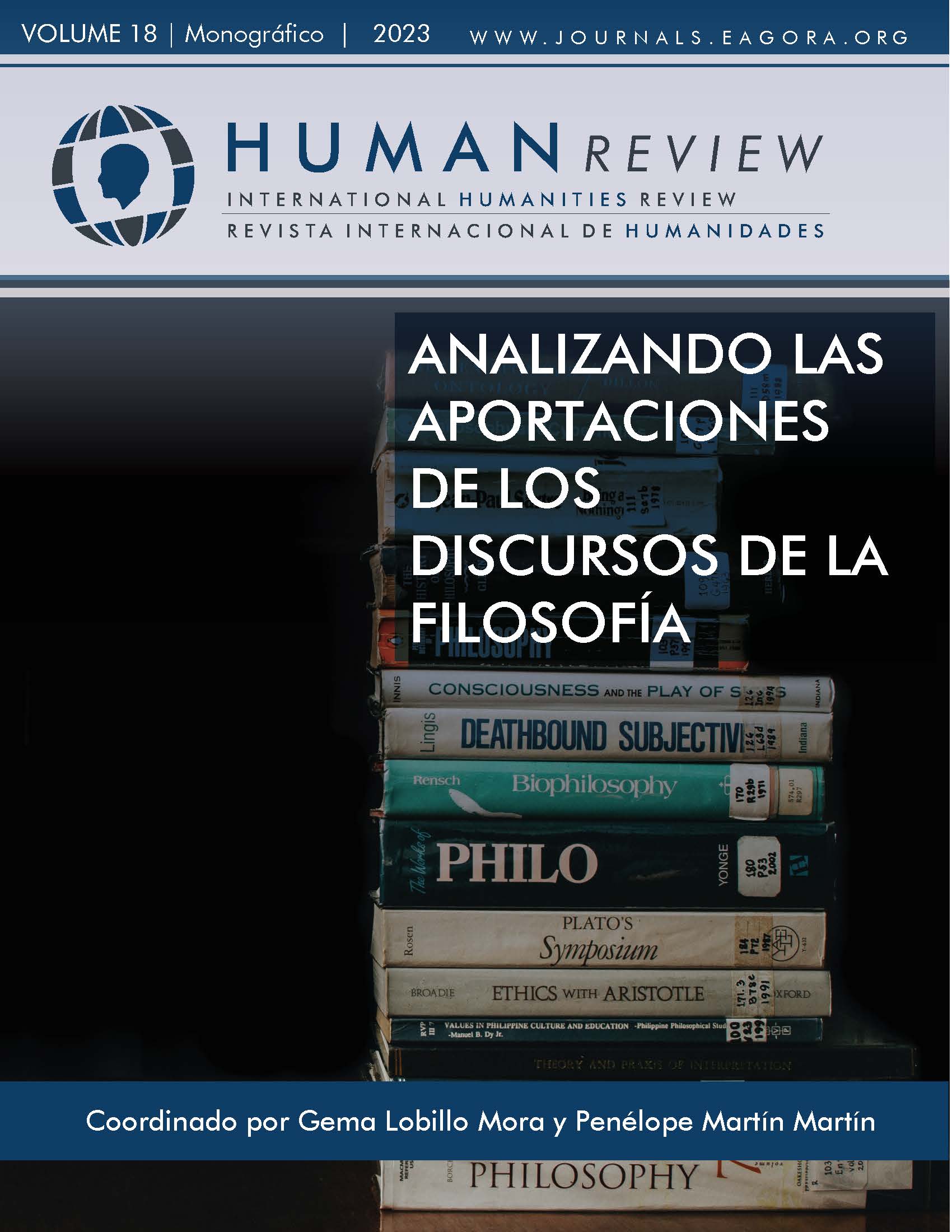Cyborg. Nomadic thinking and aesthetic drift
DOI:
https://doi.org/10.37467/revhuman.v18.4996Keywords:
Cyborg, Philosophy of technique, Aesthetic drifts, Body-art, Textualized-Expanded Bodies, Nomadic thought, Hybrid identitiesAbstract
Since the sequencing of the human genome was completed, man loses his “essence”, becoming an interpretable and modifiable text: a subversion of the flesh. D. Haraway (1995) has been one of the pioneers on the subject, defending the cyborg as a controversial entity, a cyberorganism that questions, from a certain perspective of the philosophy of technique, –and even feminisms– in which they are inscribed, also Sloterdijk, Sandel, T. Aguilar, among others, the alleged humanist essence, which is questioned around “the human” and its univocal identity. Aesthetic drifts of Orlan, Sterlac and Kac are analyzed.
References
Aguilar, T. (2009). Biosemiótica, memética y arte transgénico. Éndoxa: Series Filosóficas, 23, 359-374. DOI: https://doi.org/10.5944/endoxa.23.2009.5202
Aguilar, T. (2016). Ontología Cyborg. El cuerpo en la nueva sociedad tecnológica. Gedisa.
Benito Climent, J. C. (2011). Orlan como paradigma de la estética del sacrificio. (Tesis de doctorado). Universitat de València.
Córdoba Guardado, S. (2007). La representación del cuerpo futuro (Tesis de doctorado). Universidad Complutense de Madrid.
Haraway, D. (1995). Ciencia, Cyborg y mujeres. La reinvención de la naturaleza. Cátedra.
Heidegger, M. (1994). La pregunta por la técnica. Conferencias y artículos (Trad. de Eustaquio Barjau). Del Serbal.
Kac, E. (2022). Natural history of the enigma [Objeto]. Weisman Art Museum, Minneapolis. www.ekac.org/nat.hist.enig.sp.html
Orlan (2022). www.orlan.eu/works/photo-2/
Sandel, M. J. (2016). Contra la perfección. La ética en la era de la ingeniería genética. Marbot.
Sloterdijk, P. (2005). El hombre operable. Notas sobre el estado ético de la tecnología génica. www.otrocampo.com/3/sloterdijk.html
Sloterdijk, P. (1999). Reglas para el parque humano. Siruela.
Spinoza, B. (1998). Ética. Alianza.
Stelarc (2022). www.stelarc.va.com.au
Trías, E. (1999). La razón fronteriza. Destino.
Vega B., R. (2017). Hermenéutica de la identidad. Eros y lo dionisíaco o de una sabiduría fronteriza. Mc Graw-Hill.
Vega B., R. y Soto, V. A. (2018). Metáforas del humanismo Cyborg. El cuerpo humano como texto: ¿Violencia o posibilidad?. Confluencia. Revista Hispánica de cultura y literatura, 33(2), 93-101. DOI: https://doi.org/10.1353/cnf.2018.0008
Vega B., R. y Valderrama S. M. (2018). Nomadismo cyborg: entre el arte, la filosofía y la comunicación. En C. Del Valle y M. Linares (Ed.). Las expresiones culturales analizadas desde la Universidad. (pp. 425-436).Tecnos.
Downloads
Published
How to Cite
Issue
Section
License
Those authors who publish in this journal accept the following terms:
- Authors will keep the moral right of the work and they will transfer the commercial rights.
- After 1 year from publication, the work shall thereafter be open access online on our website, but will retain copyright.
- In the event that the authors wish to assign an Creative Commons (CC) license, they may request it by writing to publishing@eagora.org









